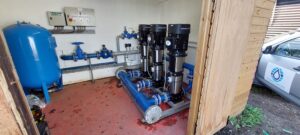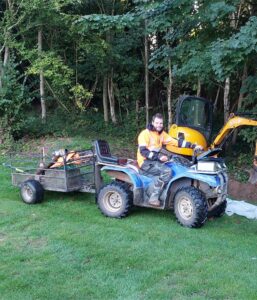How to devise a 2023 Irrigation Action Plan
Related Articles
In the third part of our series in which expert John Kidson offers advice to golf clubs on how they can improve their irrigation provision, here he advises greenkeepers to devise an ‘Irrigation Action Plan’ for next year, and what this should entail.
We are now in part three of my irrigation ramblings (part one was on irrigation controllers and part two on common questions regarding water storage and harvest). This time around I feel we need to cover ‘2023 – an ‘Irrigation Action Plan’ aimed for next season’.
As we all know, 2022 has been a dry year and we need to consider the extra toll taken on your system. Creating an action plan for next season is advised with the aim to reduce water usage, budgets and time, and with the constant aim of creating healthier turf.
I’ve listed below some of the key items I check and include when creating an Irrigation Action Plan (IAP) for clients:
• Known leaks. Document and, if able, obtain details for their repair, pipe work size and type with any local isolation available.
• Water storage – is the current storage available fit for purpose? This year would have been a strong test for any irrigation system with most systems showing the need for more storage. (Everyone is covering this aspect, we all know boreholes, harvesting and reservoirs are key for our sector and I won’t spend time on this topic within this issue.)
• Cable paths, the lifeline of the automated system. List known issues and tests of all stations before the system may be drained in the winter. At this time of year, you can see the water and coils working, but don’t forget you can test all throughout the winter and view what the controller is telling you such as high pulling coils and failing stations. Allow time in your plan for cable tests ahead of spring.
• Dry spots. Sounds odd, I know, but create a list of common areas. When time allows, even in the winter, consider visiting these areas. A large percent of dry spots is down to uneven or low sprinklers. A few hours digging against a years’ worth of hand watering will make a difference on your time, and save fuel from the utility vehicle and water. Irrigation pumps running fewer hours also leads to savings.
• Reservoir pumps in general have undergone a hard year with most water levels running much lower than in previous years. Consider in your budgets a service for these pumps. Our callouts for issues such as pumps that have run dry or are blocked or burnt out have increased this year due to the lower levels of stored water.
• Lead times. As we all know in the current climate lead times on any part, whether it’s mowers or pumps, is much longer. Once you have created your IAP and, if this plan includes an irrigation pump, consider it could be anything from two to 16 weeks. If your plan requires this new pump for the spring, then placing an order in 2022, or latest first thing 2023, is recommended.
• Condition of sprinklers and spares on site – do you hold any spares in stock? With the rise in costs and if your budget permits, buy sooner rather than later.
• Areas of risk, consider any potential hazards for your irrigation system. Items such as trees near and around any tanks / pump houses. Look for uninvited guests within pump houses: animals, nests, mother nature!
• ‘Leak Action Plan’. If not created yet then consider this item and allow time for the staff to understand its content and method. This plan should include the process of dealing with a leak / burst that arises, areas to close, safely shutting down the pumps and drain down points mapped. (This is another page of content and I may cover this more in-depth later.)
As mentioned at the start of this article these are just some of the items within an IAP, but I do feel the above shows some good tips and ideas.
Ask John Kidson irrigation questions on Twitter @JKIrrigation



























